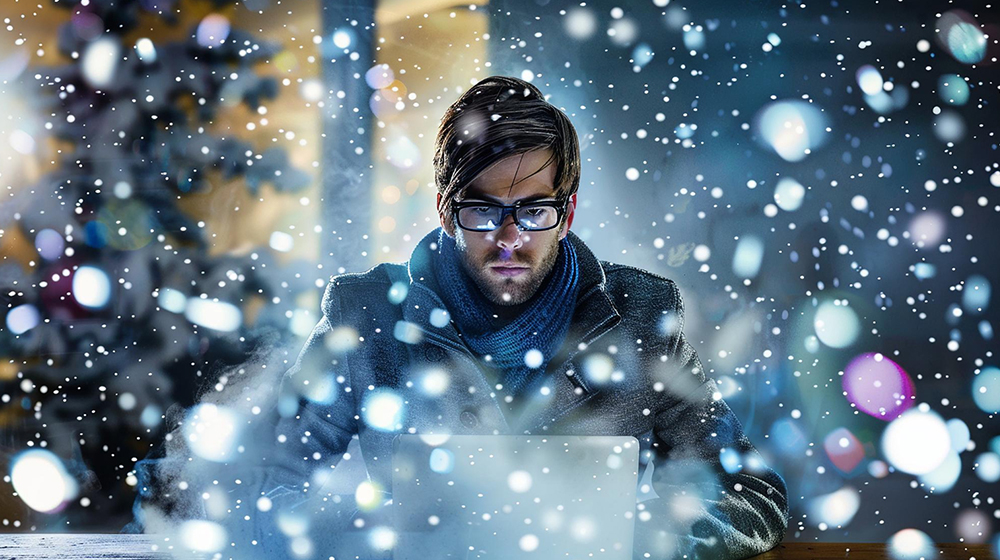Winter Wonders Innovations and the Power of IP in Transforming Cold-Climate Travel
Introduction
Winter travel holds an undeniable charm, offering breathtaking snowy landscapes, thrilling outdoor adventures, and invitingly cozy destinations. However, traveling through cold climates presents unique challenges, requiring innovative solutions in apparel, travel gear, vehicles, and transportation systems. As the industry evolves, the role of Intellectual Property (IP) becomes increasingly significant in driving technological advancements and safeguarding inventors’ rights, ensuring that groundbreaking ideas continue to enhance the travel experience.
The global travel accessories market, which includes travel bags, electronic accessories, and personal care products, has seen remarkable growth, valued at USD 48.2 billion in 2021 and projected to nearly double to USD 95.7 billion by 2031, expanding at a CAGR of 6.4%. This surge reflects the growing demand for smart, comfort-enhancing innovations, particularly for winter travellers. As interest in cold-weather travel rises, patented technologies are revolutionizing warmth and convenience, reshaping the way adventurers explore frigid environments.
Among these innovations, the Heated Clothing and Control Method (U.S. Patent No. 12,041,698) introduces flexible heating sheets and insulated pockets for customizable warmth, while the Thermal Control System for Ski Boots (U.S. Publication No. 20230053676 A) optimizes insulation to keep feet warm on the slopes. For those who enjoy hot beverages on the go, the Self-Heating Beverage Container (U.S. Patent No. 7,546,827) maintains drink temperature without external heat sources. Meanwhile, Heating and Cooling Technologies (U.S. Patent No. 11,857,004) offer IoT-enabled, moisture-free, energy-efficient solutions for vehicles, office chairs, and wearable garments, setting new benchmarks in travel comfort. These innovations redefine winter travel, ensuring a seamless blend of warmth, efficiency, and cutting-edge technology.
Transformations in Travel Means and Equipment
Travel means and equipment have undergone remarkable transformations, blending innovation, efficiency, and sustainability to redefine how we explore the world. Vehicles have advanced with features like electric propulsion, autonomous navigation, and enhanced safety systems, while winter-specific designs, such as snowmobiles, snowcats, and screw-propelled vehicles, enable seamless travel in extreme conditions.
Simultaneously, travel gear has become lighter, smarter, and more versatile, with foldable snowshoes, airbag-equipped avalanche safety gear, and adaptive luggage designed for harsh environments. Modern materials and technologies, including thermal regulation fabrics, self-heating apparel, and traction-enhancing footwear, provide unparalleled comfort and functionality. These advancements are driven by a blend of technological ingenuity and sustainability goals, with intellectual property protections fostering continuous innovation and ensuring a safer, smarter, and more accessible travel experience for all.
Innovations in Winter Travel Apparel
Winter travel apparel and gear have transcended their traditional roles, blending innovation, practicality, and sustainability to redefine cold-weather adventures. Modern advancements such as thermal regulation fabrics, self-heating jackets, and moisture-wicking base layers offer unparalleled comfort, while waterproof materials like Gore-Tex and adaptive footwear with retractable spikes ensure safety and performance in harsh conditions. Heated apparel powered by microprocessors and rechargeable batteries keeps wearers warm, while life-saving avalanche gear, foldable snowshoes, and heated sleeping bags cater to adventurers exploring extreme environments.
Sustainability also takes centre stage with recycled polyester and biodegradable textiles, reducing environmental impact. Playful innovations like sled pants add a touch of fun, and durable, high-tech travel equipment enhances convenience and functionality. Protected by intellectual property, these cutting-edge designs continue to inspire greater breakthroughs, ensuring winter travel is safer, smarter, and more enjoyable than ever.
Inventions on the road
Modern travel might not contend with the chill resilience of horses anymore, but Old Man Winter still has a say in our journeys. Thankfully, meteorology-related innovations have turned weather prediction into a traveller’s best ally, with patents utilizing machine learning, image analysis, and cloud-tracking technology to deliver personalized weather alerts and detailed snowfall forecasts. But winter isn’t the only obstacle; bustling traffic can create roadblocks of its own.
Advanced travel technologies now synchronize traffic lights with vehicles to improve flow, monitor road conditions via real-time data, and even map routes to ensure cellular coverage for remote explorers. Whether navigating city streets or snowy trails, these inventions ensure every journey is as seamless as possible leaving only the snacks to worry about for the airborne adventurers among us.
Innovations in Winter Vehicles
Winter travel has seen a leap in sophistication, with vehicles now blending safety, efficiency, and sustainability to conquer icy challenges. From electric and hybrid snowmobiles offering zero-emission thrills to AI-powered autonomous snow Plows that clear roads with precision, innovation is driving the way forward. Cold-weather adaptations for electric vehicles, like enhanced battery insulation and pre-heating systems, ensure optimal performance even in freezing temperatures.
Behind these advancements are patents protecting everything from cutting-edge mechanical designs to advanced software algorithms, safeguarding the creativity and investment that make winter travel safer, greener, and more efficient than ever.
The Importance of IP in Winter Travel Innovations
Intellectual Property (IP) plays a pivotal role in driving innovation within the winter travel industry, ensuring creativity thrives while businesses stay competitive. By safeguarding inventions through patents, trademarks, and design registrations, IP provides inventors with the confidence to invest in groundbreaking technologies, from self-heating jackets to avalanche safety gear. Exclusive rights granted by patents allow companies to carve out a unique market position, setting them apart in an increasingly competitive landscape.
Furthermore, registered IP deters unauthorized replication, protecting the integrity of innovations and rewarding their creators. Beyond protection, IP fosters collaboration—companies can license patented technologies, creating opportunities for shared growth and accelerating the development of advanced winter travel solutions. In an industry where innovation meets adventure, IP is the backbone that ensures progress is protected, promoted, and shared.
K-2 Corporation v. Salomon S.A. Defining "Permanently Affixed" in Patent Infringement Disputes
K-2 Corporation sued Salomon S.A. for allegedly infringing its U.S. Patent No. 5,437,466, which covered an in-line roller skate with a soft bootie “permanently affixed” to the base at the toe and heel areas to prevent horizontal movement. K-2 claimed that Salomon’s TR in-line skate, which used rivets at the toe and a removable screw at the heel, met this requirement. Salomon, however, argued that the removable screw meant the attachment was not “permanently affixed” as required by the patent. The United States District Court for the Western District of Washington agreed with Salomon, holding that “permanently affixed” required an unremovable connection. Since Salomon’s skate lacked this feature, the court ruled there was no literal infringement. It also held that K-2 could not argue infringement under the doctrine of equivalents because K-2 had amended its patent claims during prosecution to distinguish its invention from prior art that used removable fasteners, thereby surrendering coverage of such designs.
The Federal Circuit upheld the ruling, finding that the claim language clearly required an unremovable connection, and that prosecution history estoppel barred K-2 from broadening the claim’s scope under the doctrine of equivalents. Judge Rader dissented, arguing that the majority misinterpreted “permanently affixed” by not considering how someone skilled in the art would understand the term. He also contended that the court improperly resolved factual disputes about the nature of Salomon’s screw attachment at the summary judgment stage. Nevertheless, the decision reinforced the importance of precise claim language and the legal consequences of amending patent claims during prosecution. By narrowing its claims to avoid prior art, K-2 had effectively limited its ability to assert broader interpretations, ultimately leading to a legal victory for Salomon.
Conclusion
Winter travel innovations are revolutionizing how adventurers navigate cold climates, seamlessly integrating safety, sustainability, and cutting-edge technology. From advanced winter vehicles and self-heating apparel to intelligent meteorology tools and traction-enhancing gear, these breakthroughs are redefining the travel experience in extreme conditions. At the core of this transformation lies the strategic role of Intellectual Property (IP), ensuring that pioneering ideas remain protected while fostering further advancements in the industry.
For businesses and inventors, securing IP rights is essential to maintaining a competitive edge in the rapidly evolving landscape of winter travel technologies. Legal Advantage, a trusted leader in patent drafting, prior art searches, and IP management, provides critical support to innovators, helping them navigate the complexities of intellectual property protection. By partnering with Legal Advantage, businesses can focus on developing groundbreaking solutions with the confidence that their innovations are safeguarded.
As the winter travel industry continues to push the boundaries of technological excellence, a robust IP strategy will be instrumental in shaping the future of cold-climate exploration. With the right innovation, sustainability, and legal protection in place, travelers can look forward to safer, smarter, and more comfortable experiences in winter destinations around the world.


